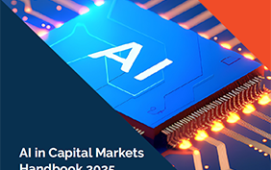As we put the last-minute touches on our agenda for next week’s Intelligent Trading Summit in New York – register here if you haven’t already – we continue to canvass the marketplace on what makes a trading platform intelligent. Part of the story, we are finding, is in approach to design. And the message we are hearing is that after a decade of polarisation in the build vs. buy debate, there is emerging a Third Way.
The concept of buying component parts and building them into a preferred trading architecture is gaining moment. Call it build AND buy. Its genesis appears to have been the recognition among larger players in particular that building everything yourself is no longer a) a requirement for key elements of trading system functionality and b) cost-effective at a time when everything is being squeezed.
And lower vendor price points, based on use of more open technologies and new commercial models like open-source, means that smaller players can start to add unique functionality where before they were constrained by resource to use of vanilla third-party systems with little scope for differentiation.
Underpinning all of this is a visible trend toward freedom from reliance on a single supplier, even as the post-trade data management requirement becomes more complex the more components are involved. (Indeed, a common emerging complaint is the difficulty in integrating the output from multiple trading systems in a way that can be applied to the raft of new reporting requirements being demanded by regulators.)
Those with the savvy and resource are building trading infrastructures based around central messaging platforms. They are integrating front-end components – OMS, EMS, market data – from third-party suppliers. And they’re driving all post-trade messaging across the platform to middle- and back-office functions like risk management, regulatory reporting and settlement.
Ensuring consistency of data is the new challenge, driving a potential trade-off between performance/functionality and the ability to handle data outputs from multiple systems. We’ll be hearing about some of this at ITS in New York next week, where experts from the likes of sponsors Fidessa, Tibco and IBM will share their insights into how they are helping clients develop intelligent trading systems in this new environment. And we’ll be hosting a webinar on the topic, probably in June, to delve into drivers, challenges and best practices.
In all this excitement, I find myself humming a familiar tune. With apologies – once again – to Paul McCartney, it goes something like this:
‘And in this ever-changin’ world in which we’re living
Makes you give it a try – To build AND buy’
Subscribe to our newsletter





